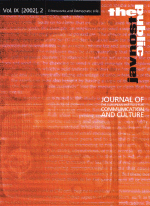The John W. Hartman Center for Sales, Advertising & Marketing History, part of Duke University's Rare Book, Manuscript, and Special Collections Library, holds an extensive collection of over 3,000,000 items — correspondence, publications, advertisements, photographs, slides, films, books and serials — that document the history and societal impact of advertising, sales, and marketing over the past two centuries. In addition to the J. Walter Thompson Company Archives, the most comprehensive historical record of any advertising agency, the Center contains the collections of other key companies and individuals in the fields of advertising, marketing and sales.
Special Projects at the Hartman Center
Ad*AccessAn image database of over 7,000 advertisements printed in U.S. and Canadian newspapers and magazines between 1911 and 1955.
Emergence of Advertising in AmericaA database of over 9,000 advertising items and publications (1850 - 1920), illustrating the rise of consumer culture, and the birth of a professionalized advertising industry.
Medicine and Madison AvenueA database of over 600 health-related advertisements printed between 1911 and 1958, as well as 35 selected historical documents relating to health-related advertising.
ROAD: Resource of Outdoor Advertising DescriptionsA database of over 50,000 descriptions of images of outdoor advertising dating from the 1920s through the 1990s, pulled from four outdoor advertising collections including the Outdoor Advertising Association of America (OAAA). No images are available from this website.



